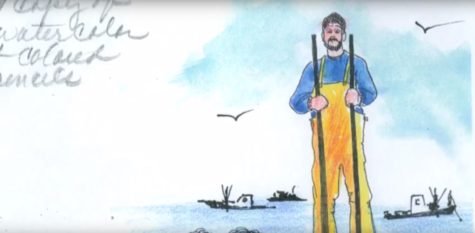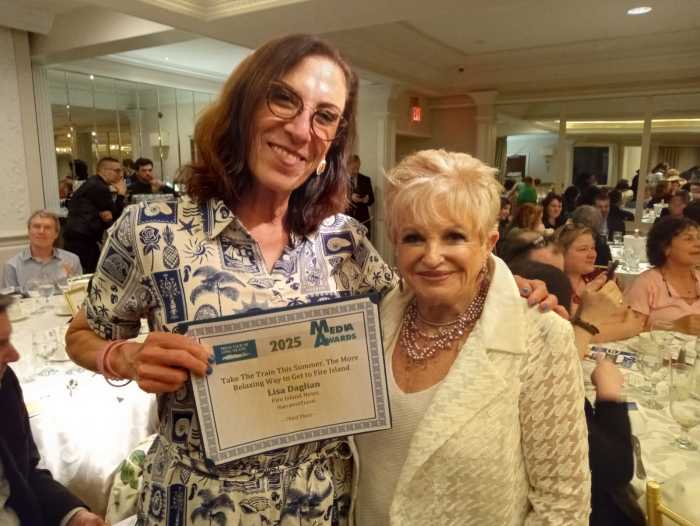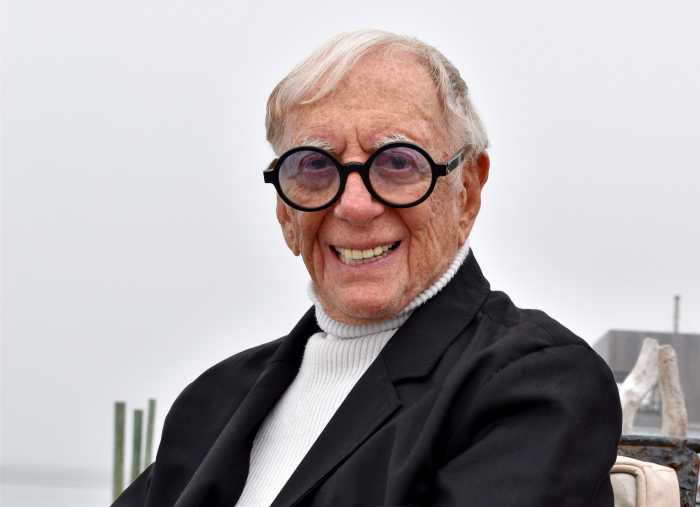BABYLON, NY: Babylon Village residents have proposed a bayman statue to honor the rich history of clamming, a trade with deep roots in the Great South Bay, now nearly extinct. “We have a steering committee which reaches across a broad spectrum of folks interested in our waterfront heritage as well as its future,” explained Bayman Committee member, Scott Lockwood.The statue, proposed to stand seven feet tall, will be added to Argyle Park, east of Foster’s Creek in the summer of 2017, visible from both Main Street and the water.“Kathy Herzy, a local artist, created the conceptual drawing and paintings; she is working with Don Bartsch to bring those two-dimensional works to life in bronze,” Lockwood continued.A sketch by Herzy depicts ‘The Bayman’ as a Grundén wearing, tong holding, burly clammer. A community Facebook group, Babylon Bayman, provides information on the plans and fundraising events to support the cost of the statue. Community members have posted images, allowing them to reminisce about their days of fishing and clamming in their youth.“It’s historic, economic and environmental all at once. The statue is one part of the overall project aimed at preservation of not only the history, but also the Great South Bay and it’s estuaries,” said Lockwood.Clamming the Great South Bay was once a multi-million dollar industry, with its peak years in the 1970’s. The Bay once produced over 50 percent of the hard shell clams eaten in the United States, with 6,500 clammers working in the bay. After the first brown tide of 1985 and environmental problems such as overfishing, runoff, algal booms, harsh lawn fertilizers and septic tanks, clamming the Great South Bay became a world fast fading.Nancy Solomon, President of Long Island Traditions whose organization is “dedicated to documenting and preserving the living cultural traditions of Long Island’s ethnic, occupational, and architectural heritage,” and specifically helps to preserve the traditions of commercial and recreational fishermen, proposed a different view of the bayman statue.“I think it’s a very romantic idea to create a statue and I’m sure there are many people responding to that. The larger issue is what is the purpose of this?” asked Solomon.“If it’s strictly to recognize the critical role that baymen have played on Long Island and in the town of Babylon specifically, then it’s a wonderful idea but I don’t think the town’s doing anything beyond that and then it becomes more of a showcase effort than something of substance.”After the boom years, many restrictions have been set on clamming in the Great South Bay from the amount of clams able to be harvested to the types of tools being used. Though many issues are to blame for the poor water quality and declining marine life in the Great South Bay, baymen have been heavily accused of overfishing due to a lack of regulation during peak years. Though baymen are now scarce, “they are not dead yet” reminded Solomon, insisting that a statue is typically made to commemorate an event or life of someone passed.“There needs to be a larger awareness that baymen are not the problem, they are simply reacting to the larger course of pollution of runoff,” she added. “Baymen are still out there, and they would like to continue working on their water and pass those traditions on to the next generation. ” To learn more about this project, visit www.babylonbayman.org. 




























